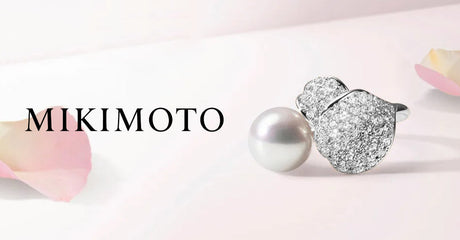Jewellery & Watch News
The House of Fabergé and its remarkable collections of jewellery have long symbolised opulence, beauty and high quality craftsmanship. Their breathtaking collections of Fabergé eggs, necklaces, charms, earrings and bracelets are renowned for their traditional and intricate techniques which include the likes of gem setting, enamelling and guilloche.
Peter Carl Fabergé, the original genius behind the Fabergé name, was known for being an expert in the art form of enamelling. Before he took over his father’s jewellery business, as a teenager he embarked upon a Grand Tour of Europe where he received tuition from respected goldsmiths in Germany, France and England and soon after became involved with cataloguing, repairing and restoring masterpieces in the Hermitage museum in Russia. It was during this time that he succeeded in inventing more than 145 new colours and established himself as a pioneer in enamelling techniques.
In keeping with Peter Carl Fabergé's legacy, the Fabergé jewellery that you see today continues to offer many exceptional hues of colour and enamel in their designs. Watching the intricate process of enamelling is absolutely captivating, especially when you see the talented artisans at Fabergé work their magic. The process involves bonding coloured glass to a surface in order to fuse the metal and the glass powder together. The powder then melts, flows and hardens into a shiny surface, creating an unmissable finish on the metal. The art of hot enamelling is a highly complex and delicate procedure and requires great skill, patience and many years of experience.
What makes each piece of Fabergé jewellery so special is that every enamel design is completely unique due to its individual treatment and reaction to the firing process. Unlike cold enamelling, the art of hot enamelling brings a whole new depth and luminosity to the colour variations and provides a range of opalescent, opaque and translucid shades. The process is applied by hand in the Fabergé workshops and is completed in at least five layers, sometimes requiring up to five firing in the kiln. This means that it can take as long as two days to produce a single item, or longer if there is even the smallest slip of the hand or a few seconds too long in the kiln – since the piece will then have to be re-started from scratch.
Guilloche is another ornamental technique made famous by Fabergé. The French terms involves engraving metal in repetitive, linear patterns such as overlapping waves or interlaced ribbons. At the end of the 18th century, artisans discovered that if translucent enamel was applied over a guilloche surface, light was reflected through the enamel and exquisite interplay of light and colour came to life. Like enamelling, the art of guilloche must be undertaken by only the most highly skilled craftsmen and women and because of this, it appears to be a dying art in today’s jewellery industry.
Fabergé refuse to let these magical jewellery techniques die, with many of their breathtaking collections of jewellery featuring colourful enamelling and exquisite guilloche detailing. They remain proud of supporting those that still practice the art and allow them the opportunity to showcase their talents in their workshops.
If you would like to discover Fabergé and their breathtaking collections of jewellery, head over to the C W Sellors website now to find all the latest Fabergé jewellery and watch collections. Our team of jewellery specialists are also always on hand to answer your questions, simply get in touch with on 01335 453453 or at sales@cwsellors.com









